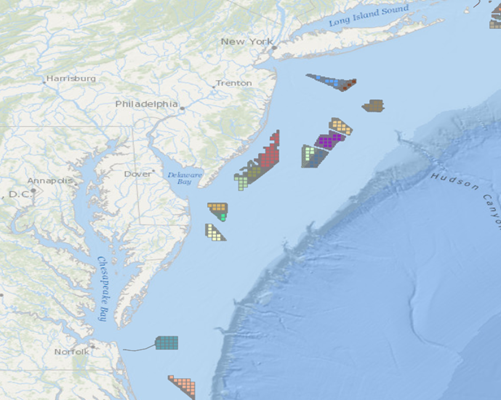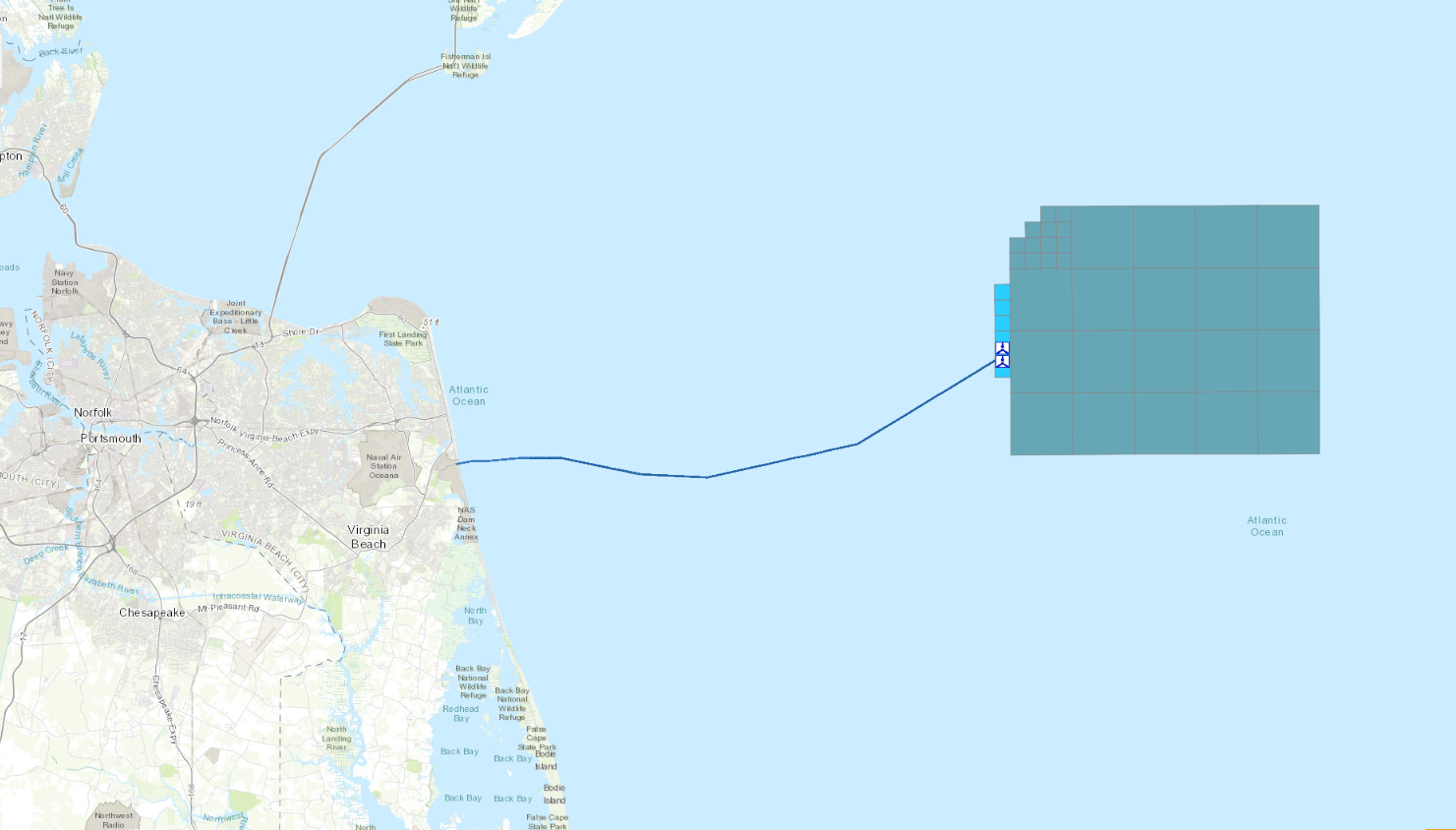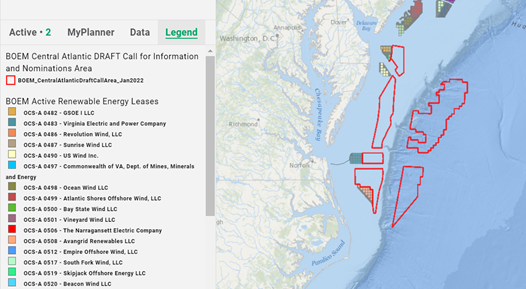SHARED REGIONAL PRIORITIES
Renewable Energy
MARCO’s Mid-Atlantic Ocean Data Portal houses and displays thousands of data layers to help coastal managers, decision makers, and members of the public understand potential interactions between offshore wind development, marine life and various ocean uses and resources.
A Current Agency Actions and Public Comment Opportunities page was created offering a snapshot of ocean planning activities in the region and work likely to be of interest to MARCO and the Ocean Data Portal’s community of users.
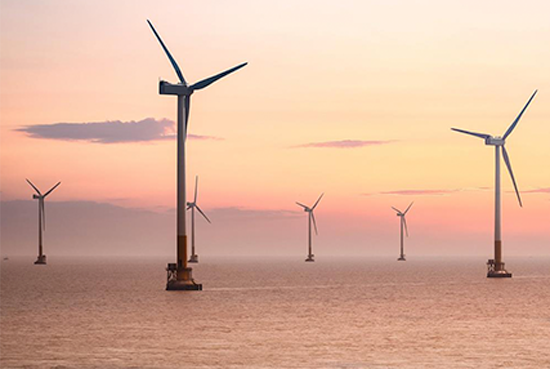
Ocean Data Portal/Ocean Story Highlights
1. Offshore Wind Lease Areas in the Mid-Atlantic
BOEM Active Renewable Energy Lease Areas, the Portal’s most clicked map layer, shows lease areas at sea that have been auctioned by BOEM for offshore wind development. Many of these are at advanced stages of the process toward development, or even have some level of construction taking place. For more information on the New York Bight Lease Areas, visit BOEM’s webpage for more information on the New York Bight Lease Areas.
2a. Coastal Virginia Offshore Wind (CVOW) Project
This map shows in light blue the Research Area leased by the Commonwealth of Virginia and in teal, the commercial area leased by Dominion Energy. The Lease Area contains the only two operational wind turbines in U.S. federal waters that are actively generating electricity today. Installation was completed on the two turbines in the summer of 2020 and became fully operational by October. Construction of about 178 turbines in the commercial area is expected to begin in 2024 and will produce 2600 MW.
2b. Coastal Virginia Offshore Wind (CVOW) Project
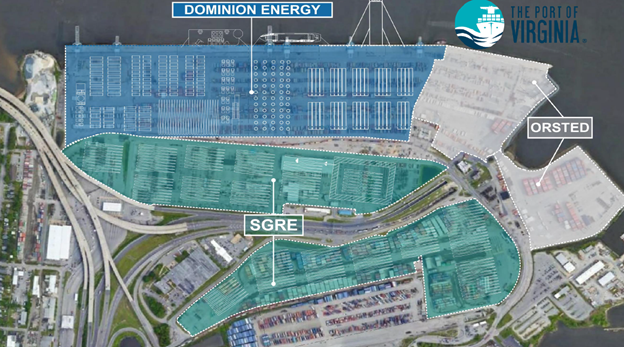
This map of the Virginia Portsmouth Terminal near the mouth of Chesapeake Bay shows areas leased by Dominion, GAMESA and Orsted for offshore wind construction and staging. GAMESA will fabricate turbine blades at this site and barge them to the CVOW commercial lease area during the construction period.
3. BOEM Central Atlantic Call Areas
As part of the Biden-Harris administration’s goal to deploy 30 gigawatts of offshore wind energy by 2030, the Bureau of Ocean Energy Management (BOEM) announced on April 27, 2022, that it will publish a Call for Information and Nominations (Call) to assess commercial interest in — and obtain public input on — potential wind energy leasing activities in federal waters of the Central Atlantic. Additional information including the most up to date announcements and activities can be found at BOEM’s Central Atlantic webpage.
State Resources
Disclaimer: The Mid-Atlantic Regional Council on the Ocean does not endorse any federal, regional or state organization’s renewable energy goals or activities. This list is for informational purposes only.
- NYS Ocean and Great Lakes Program
- NYS Offshore wind program
- NJDEP offshore wind page
- NJ clean energy program
- DE Division of Climate, Coastal and Energy
- Maryland Energy Administration
- Virginia Offshore Wind Development Authority
- Virginia Coastal Zone Management
- Dominion Coastal Virginia Offshore Wind
Learn more about how MARCO works with federal partners to advance responsible offshore wind development through the Mid-Atlantic Council on the Ocean (MACO) Offshore Renewable Energy Work Group.

